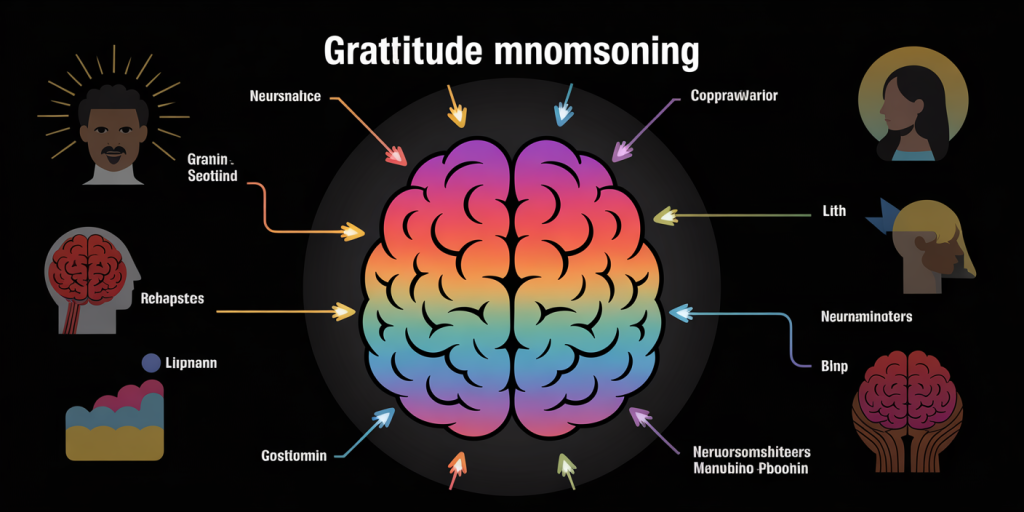How to Create Daily Gratitude Rituals to Boost Well-Being
In today’s fast-paced and often stressful world, maintaining mental and emotional well-being can be a significant challenge. One powerful, yet simple, tool that has been shown to enhance overall happiness and health is the practice of gratitude. According to a 2019 study published in the *Journal of Positive Psychology*, individuals who regularly engage in gratitude exercises experience greater life satisfaction, improved mood, and reduced symptoms of depression and anxiety. Creating daily gratitude rituals, therefore, offers an accessible path to cultivating well-being in both personal and professional spheres.
The key to harnessing gratitude’s benefits lies in ritualizing it—transforming gratitude from a fleeting feeling into a consistent habit. By establishing daily practices that encourage noticing and appreciating the positive aspects of life, individuals build resilience, foster optimism, and deepen their connections with others. This article explores actionable steps to create effective daily gratitude rituals, supported by practical examples and relevant research.
—
Understanding the Science Behind Gratitude and Well-Being
Gratitude is more than just saying “thank you”; it is a conscious recognition of the good in one’s life. Neuroscientific research has demonstrated that practicing gratitude activates the brain’s reward system, including the hypothalamus and ventral tegmental area, releasing dopamine and serotonin—the “feel-good” neurotransmitters. This neurological grounding explains why gratitude is linked to emotional well-being.

A pivotal 2020 meta-analysis involving over 20,000 participants worldwide revealed that gratitude interventions significantly reduce stress and increase positive affect. Furthermore, the benefits extend to physical health, with grateful individuals reporting fewer aches and pains, better sleep quality, and a stronger immune system, according to a 2017 study by Emmons and McCullough.
Gratitude’s power lies in its ability to reframe perspectives. By regularly acknowledging what’s going well, individuals mitigate the cognitive bias towards negative events. This enhances coping mechanisms during tough times, improving both psychological and physiological outcomes.
—
Designing Your Daily Gratitude Ritual
Creating a daily gratitude ritual requires intentionality and simplicity. The first step is selecting a time and method that fits seamlessly into your daily routine. Morning and evening are the most popular times, each offering distinct advantages: morning gratitude sets a positive tone for the day, while evening reflection promotes peaceful rest and mindfulness.
One practical method is maintaining a gratitude journal. Writing down three specific things you are grateful for each day has been linked to improved optimism and sleep quality. In a real-world example, a 2018 initiative at a Fortune 500 company encouraged employees to note daily gratitudes. After eight weeks, employee engagement scores rose by 12%, and overall workplace stress dropped significantly.
In addition to journaling, verbalizing gratitude in daily conversations strengthens social bonds. Expressing appreciation to family members, friends, or colleagues not only uplifts others but also reinforces feelings of connectedness and support. Techniques such as gratitude walks—where one consciously reflects on positive experiences while walking—can also embed gratitude into physical activity.
Table 1: Comparing Popular Gratitude Rituals
| Ritual Type | Best Time to Practice | Key Benefits | Practical Example |
|---|---|---|---|
| Gratitude Journaling | Morning or Evening | Enhances optimism, improves sleep | Writing 3 gratitudes before bed |
| Verbal Gratitude | Throughout the Day | Builds relationships, boosts mood | Thanking a coworker after meetings |
| Gratitude Walk | Morning or Afternoon | Integrates mindfulness with exercise | Reflecting on positive events while walking |
—

Overcoming Common Barriers to Practicing Gratitude Daily
Despite its benefits, establishing daily gratitude rituals can face obstacles. A common barrier is time constraints. Many individuals feel their schedules are too packed to add new practices. Addressing this requires adapting gratitude activities to fit even the shortest time frames—for instance, dedicating just 2 minutes to mentally note what you’re thankful for during a commute or waiting in line.
Another challenge is skepticism or emotional resistance. Some people may perceive gratitude as trivial or feel that focusing on positives invalidates their struggles. It’s important to emphasize that gratitude does not mean ignoring difficulties but rather recognizing strengths and sources of support amid challenges. Cognitive-behavioral approaches advocate integrating gratitude with acknowledgment of hardship to foster balanced emotional processing.
Moreover, consistency can be difficult without reinforcement. Setting reminders via apps or pairing gratitude with existing habits—such as brushing teeth or having morning coffee—can address this issue. In a controlled experiment by Emmons and Stern (2013), participants who linked gratitude journaling with a daily routine were 60% more likely to sustain the practice over three months.
—
Enhancing Gratitude Rituals With Technology
The digital age presents innovative tools that can bolster daily gratitude practice. Mobile apps focused on gratitude incorporate guided prompts, mood tracking, and community sharing features, making rituals interactive and accessible.
For example, the app *Gratitude Journal* offers daily notifications prompting users to record gratitude entries, accompanied by inspirational quotes and mindfulness exercises. Data from the app’s user base indicates that those who used the app daily for 30 days reported a 25% increase in self-reported happiness scores.
Social media platforms can also be repurposed to nurture gratitude by encouraging users to share “thankful moments” with a supportive audience. However, it is crucial to maintain authenticity to avoid gratitude becoming performative or stressful.
Table 2: Technology Tools for Supporting Gratitude Practices
| Tool Type | Features | Benefits | Example Apps |
|---|---|---|---|
| Reminder Apps | Notifications, habit tracking | Increases consistency | HabitBull, Streaks |
| Gratitude Journals | Guided prompts, mood charts, inspirational content | Enhances reflection and mood | Gratitude Journal, Happier |
| Social Platforms | Sharing posts, community support | Builds social gratitude networks | Instagram gratitude hashtags |
—
Real-Life Case Study: Implementing Gratitude Rituals in Healthcare Settings
Healthcare professionals face high burnout rates due to stress and emotional fatigue. Introducing gratitude rituals in this demanding environment has demonstrated measurable improvements. At Massachusetts General Hospital, a pilot program encouraged nursing staff to begin shifts with a “gratitude circle,” where each member shares one thing they appreciate.

After six months, surveys showed a 15% decrease in reported stress and a 20% improvement in team cohesion. Interviews revealed that employees felt a renewed sense of purpose and support, helping counteract burnout.
This case illustrates how collective gratitude practices not only improve individual well-being but also enhance organizational culture. It provides a replicable model for other high-stress professions and workplaces.
—
Future Perspectives on Daily Gratitude Rituals and Well-Being
As research on positive psychology evolves, the role of gratitude in enhancing well-being continues to gain prominence. Future developments may integrate personalized gratitude practices powered by artificial intelligence, tailoring prompts based on moods and life circumstances to maximize effectiveness.
Furthermore, longitudinal studies are underway to understand how lifelong gratitude habits influence aging and chronic disease management. Preliminary evidence suggests that consistent gratitude may promote healthier aging by reducing inflammation and boosting cardiovascular health.
On a societal scale, integrating gratitude cultivation into educational curricula could foster emotional intelligence and resilience from an early age, potentially reducing mental health issues in younger populations.
Expanding the accessibility of gratitude practices through multilingual applications and culturally sensitive programming will also be crucial as global interconnectedness increases.
—
In summary, creating daily gratitude rituals is a practical, evidence-based approach to improving well-being. By understanding its scientific roots, designing personalized routines, overcoming barriers, leveraging technology, and drawing insights from real-life applications, individuals and organizations can foster sustained positive change. The future holds promising opportunities for enhancing these rituals through innovation and broader societal integration, offering hope for collective emotional and physical health improvements.
